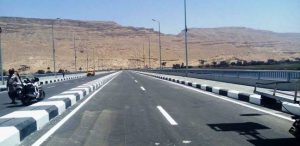Sohag Travel Guide
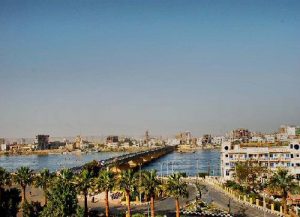
Sohag is a governorate in Upper Egypt about 470km away from Cairo and bordered with Assyut from the north, Qena from the south, and Red Sea Governorate from the west. It covers about 6546km² and comprises of a large number of administrative centers, cities, and villages including Akhmim, Gerga, and Dar El Salam. It is one of the densely populated governorates in Upper Egypt and is distinguished with its dry weather and rare rainfall. Sohag is blessed with a wide range of agricultural land and renowned for producing numerous crops like wheat, rice and cotton in addition to sugar cane. The capital is Sohag City that is regarded as the major commercial center in the governorate. The 10th of April is the national day of the governorate to celebrate the victory of the Egyptian national resistance troops on the French troops in Johaina Battle in 1799. Sohag encloses a huge number of educational institutes and vocational training centers in addition to seven governmental faculties to overcome illiteracy in Upper Egypt. In addition to the limited number of archaeological sites on the land of Sohag, there are other sources of income for the governorate including trade and small industries of carpets, furniture, spinning and weaving and sugar.
Sohag City
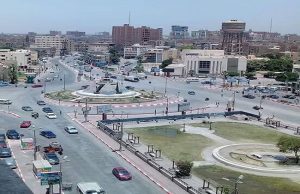
Sohag City is the capital of Sohag Governorate on the west bank of the Nile. It is regarded as the main educational center for the governorate since it enclose about seven faculties and numerous vocational training centers that have been established for increasing the educated people in Upper Egypt. About 16km away from Sohag, another city called New Sohag was established in 2000 and supplied with a huge medical institute equipped with highly advanced technologies and services. Sohag City is also one of the tourist attractions in Egypt because it encloses a number of Coptic monuments including the Red Monastery and the White Monastery. Further more, there are several mud-brick cemeteries dating back to the Old Kingdom in ancient Egypt. Sohag can be easily reached using railroads extended from Cairo to Sohag and the other routs linking it to the neighboring governorates including Assiut. It is renowned for its magnificent natural beauty and moderate weather that attract tourists for visiting it. It is planed also to establish an international airport in Sohag for boosting the developmental process and investments in that area. The main economic resources for the city are tourism, administrative and educational services, and trade.
Gerga
Gerga is one of the cities of Sohag Governorate in Upper Egypt. The actual name of the town is derived from Saint George but in ancient times the site was known as 'Tjeny', where scholars believe it is the mythological city of Thinis from where Menes led the unification of the country. In addition to the monumental places in that city, it is highly admired for its magnificent natural beauty of its greenery. The main economic resources for the city are small industries such as sugar and some handcrafts such as potter making. There are some monuments dating back to the Old Kingdom in Gerga including Beit Qalaf Necropolis of Mastabet Beit Khalaf which is a mud-brick tomb tracing back to the 3rd c. Due to the great importance of the city during the Coptic era, it encloses the oldest Roman Coptic Monastery in Egypt.
Akhmim
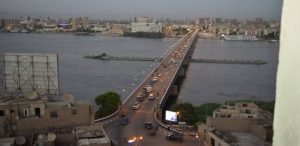
Akhmim is a large town in the east side of the Nile, in Sohag Governorate, in Upper Egypt. It was the capital of the ninth Nome of Upper Egypt and its ancient name was Khent-min. Min, the fertility god, was the lord of Khent-min where he had a sanctuary. In 1981, the ruins of a Greco- Roman temple with colossal statues of Ramses II and Meritamen were discovered. In the Christian Coptic Era, many monasteries were contained within the city's walls. When the city was excavated, many Christian manuscripts were therefore found. Unfortunately, Akhmim has extensive ancient cemeteries that are not completely explored. Nowadays, Akhmim is regarded as the most densely populated cities in Egypt and the majority of its inhabitants are Christians. It is famous for its textile industries and handmade products that is usually displayed in Akhmim weekly market. It is linked with Cairo and Aswan governorates with railroads to facilitate visiting the monumental places in that area.
Dar El Salam
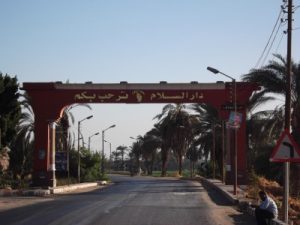 Dar El Salam is one of the administrative center located in the south-east of Sohag Governorate. It is bordered with the Nile River from the west and the Red Sea mountains from the east. Dar El Salam encloses a large number of cities and villages and the main source of income for its inhabitants is agriculture and some small industries. It is regarded as one of the poorest centers in Sohag.
Dar El Salam is one of the administrative center located in the south-east of Sohag Governorate. It is bordered with the Nile River from the west and the Red Sea mountains from the east. Dar El Salam encloses a large number of cities and villages and the main source of income for its inhabitants is agriculture and some small industries. It is regarded as one of the poorest centers in Sohag.
El Balyana
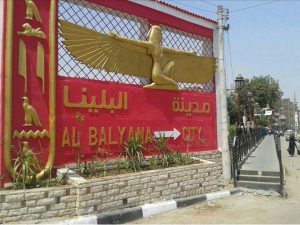 El Balyana is one of the major cities of Sohag Governorate covering about 160km². It was one of the important cities in Ancient Egypt and the islamic period as well. Nowadays, it is inhabited by some nomadic tribes like Hawara and Banu Mohamed. Arabat Abidus, Seti I Temple , and Ramses II Temple are most attractive touristic places located on the land of Sohag nearby El Balyana City. In addition to that there is a number of necropolises dating back to the first and the Second Dynasties in ancient Egypt.
El Balyana is one of the major cities of Sohag Governorate covering about 160km². It was one of the important cities in Ancient Egypt and the islamic period as well. Nowadays, it is inhabited by some nomadic tribes like Hawara and Banu Mohamed. Arabat Abidus, Seti I Temple , and Ramses II Temple are most attractive touristic places located on the land of Sohag nearby El Balyana City. In addition to that there is a number of necropolises dating back to the first and the Second Dynasties in ancient Egypt.
El-Manshiya
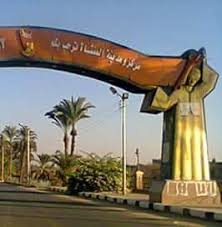
El Manshiya is a town in Sohag Governorate in Upper Egypt. It is a city of a great history dateing back to the Ptolemaic Rule in Egypt when it was known as 'Ptolemais Hermiou'. Ptolemy I Soter established this city to be a Greek colony and the capital of Upper Egypt. Nowadays, it is one of the cities of Sohag that depend on agriculture as a main source of income.
Gohaina
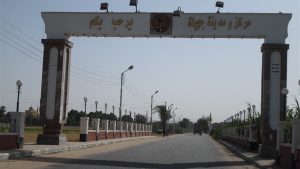
Gohaina is a city and an administrative center in Sohag Goacvernorate on the western bank of the Nile in Upper Egypt. It is called in that name because it is the center of the Nomadic tribe of Gohaina who arrived the area with the Islam conquest of Egypt. It is a huge tribe that has some branches in Saudi Arabia and many other Arab countries. Gohaina City is the birth place of some prominent figures in Egypt including Gamal El Ghitany, Chief Editor of Akhbar El Adab Newspaper.
Tjebu
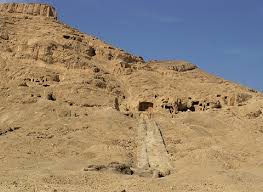
Qaw El Kebir is now a small village in the governorate of Sohag, in Upper Egypt. In ancient times, its name was Tjebu and it had an ancient city dating back to the Middle Kingdom. In the Greco-Roman Period, its name was 'Antaeopolis'. Qaw El Kebir archeological site has many cemeteries of officials of the Twelfth and Thirteenth Dynasties with some well-preserved paintings. Additionally, on its land there was a Ptolemaic temple that was dedicated to Antiwey and Nephthys but it was destroyed in the 19th century.
Saqtella
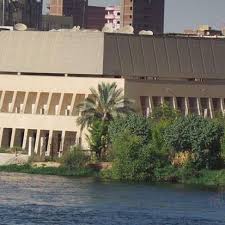
Saqtella is a city and administrative center in Sohag Governorate in Upper Egypt. It comprises of a large number of small towns and villages and the mais source of income in it is agriculture and some handcrafts such as weaving. On its lands stands the major Chatholic Church in Sohag, Virgin Mary Monastery, and the Eastern Monastery.
Tahta
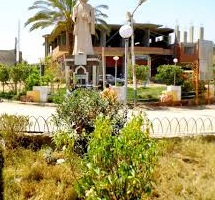
Tahta is a city in Sohag Governorate on the west bank of the Nile in the Upper Egypt. It is famous for being the birthplace of the famous writer Refaa El Tahtawy and Sheikh Said El Naqshabandy. It is located inbetween Akhmim and Assiut and comprises of a large number of small towns and villages. The main economic resources for it are agriculture and trade and it is one of the famous centers for furniture industry after Damietta.
More about Sohag Travel Guide
Things to do in Abydos
Once one of the oldest cities of Egypt, today Abydos (or 'Abdju' in ancient Egyptian) is a small town of Sohag Governorate, almost 180 kilom...+
Read MoreRed Monastery - Deir Abu Bshoi
Deir Amba Bishoy (Monastery of St. Bishoi) or Deir Al-Ahmar (Red Monastery) lies 4mi/6km to the northwest of Deir Al Abyad (White Monastery)...+
Read MoreThe White Monastery
Deir el-Abyad (or the White Monastery in English) (also known as Deir Amba Shenuda or Shenute) is a Coptic Orthodox monastery. It lies about 4 kilomet...+
Read More